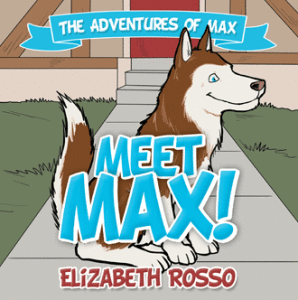From time to time, Archway Publishing turns over its blog to its authors, giving them the opportunity to share stories and perspectives about their individual self-publishing journeys. The following are the words of Elizabeth Rosso, author of “Meet Max”. Download the Archway Publishing free publishing guide for more information on our supported self-publishing services.
Welcome back! Last time was all about how I came up with the idea for Max and got everything preserved in writing. The resulting smorgasbord of thoughts was far from a finished product, however; it needed work. Lots of work. As overwhelming as that might sound, it really boiled down to length and page content.

First, length. I needed to keep my target audience in mind. A child’s attention span is shorter than an adult’s, and younger children will lose interest more quickly than older ones. But which parts to condense, or cut out altogether? At first I wasn’t sure, so I saved all the deleted language into another file so I could add it back in easily if needed. As I worked, I noticed that certain sections felt like they were dragging, or that some parts seemed to need more work than others. Those are the sections I cut out – after all, if it was my work and even I thought it was dragging, what child would stick around to hear what happens next? In the end it came down to keeping only those parts of the story that moved – they had action verbs or involved dialogue. And when the storyline reached a point where it was naturally ready to shift to another activity or another day, that’s when this particular story ended. The new day would be a new story!
Next it was time to decide what text went on which page and with which illustration (even though I didn’t have illustrations…yet). Since it’s a children’s book, my initial thought was to keep it very simple, with just one sentence on each page. But after I divided the manuscript that way, it became clear that this was a bit too simple, because the story seemed to drag on forever. So I moved towards keeping one idea or concept per page: Max’s size, his family, his home, etc. I still limited the text so it wouldn’t be overwhelming for my target audience, but even with two or three sentences per page it felt neither too wordy nor too slow.
After all that – along with a lot of internal back-and-forth over word choice – I finally had my manuscript. Now I needed to bring it to life. More questions: do I go the traditional route, paved with rejection letters from big publishing houses? Or do I publish it myself? You already know the answer, but more on how I got there next time!
Archway Publishing is always looking for content for its blog. If you’re an Archway Publishing author and would like to share an idea for a guest blog post, please tweet the Archway Publishing Twitter account @ArchwayPub and Like the Archway Publishing Facebook page.




